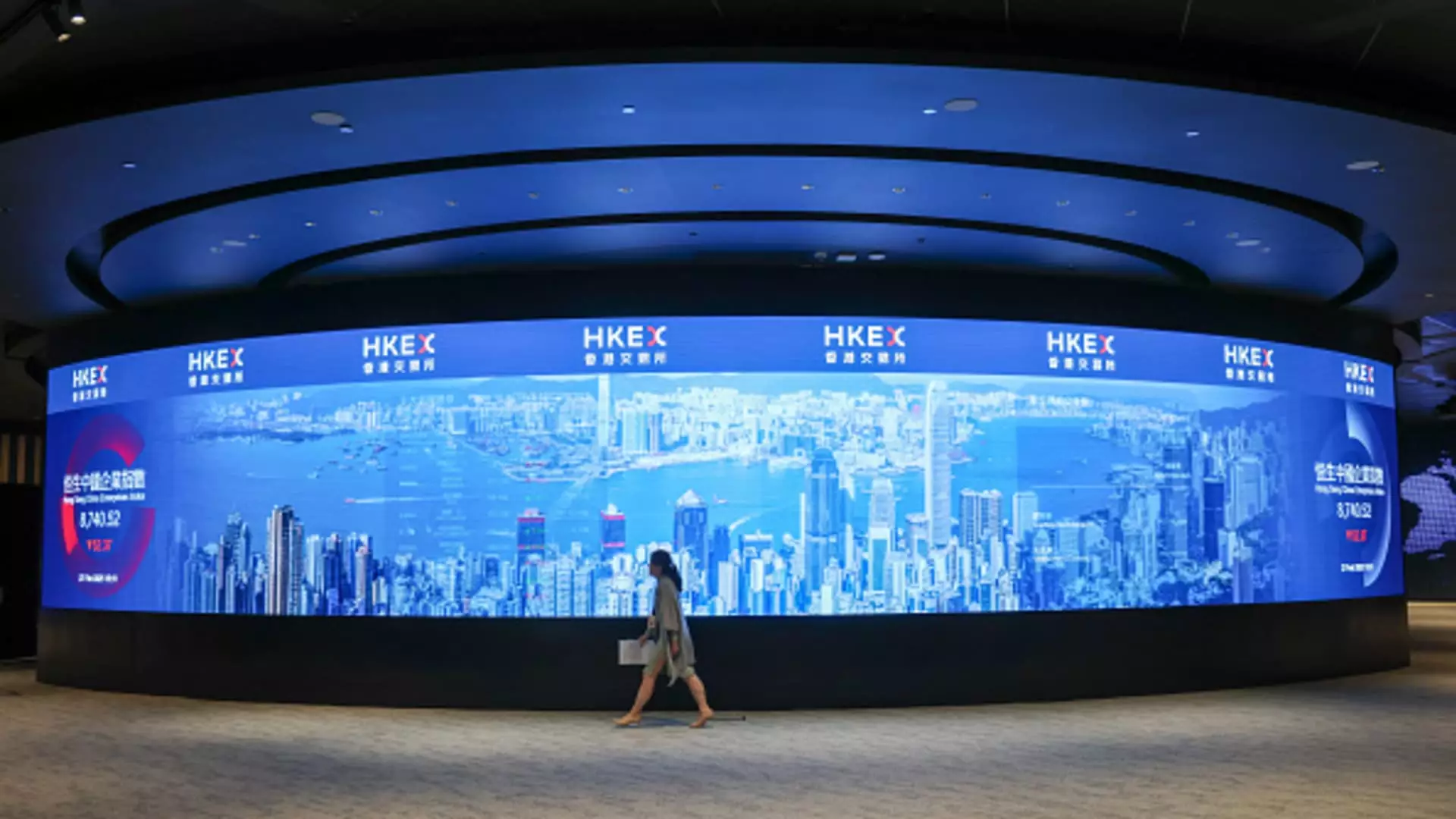The recent influx of mainland Chinese capital into the Hong Kong stock market has reached stratospheric levels, with a staggering net purchase of 29.62 billion Hong Kong dollars ($3.81 billion) recorded in a single day. This marks a paradigmatic shift, especially in the context of the tech-fueled Hang Seng Index inching towards its highest points in three years. What began as a mere exploration of offshore investment avenues for mainland investors has evolved into a veritable tidal wave of interest. Yet, amid this excitement lies a quagmire—an overarching question of sustainability and risk.
Critics might argue that the sheer volume of transactions could create an artificial inflation of stock prices, detaching them from their underlying economic fundamentals. This situation propels us into a speculative minefield where the motives of investors are not merely to seek profit but to navigate through political and economic uncertainties burgeoning on the global stage. While the encouragement from Chinese policymakers regarding tech innovation might appear buoyant, one cannot ignore the potential ramifications of over-leveraging this newfound enthusiasm.
The Cancer of Global Tariff Concerns
Trading down 0.7% after a pronounced sell-off in U.S. stocks is a reminder that issues beyond Hong Kong’s vibrant market can dampen investor sentiment. The specter of tariffs hangs heavily over the global economy, affecting every market participant regardless of their geographical locale. While it would be naïve to diminish the role that local sentiment plays, it would be equally reckless to ignore the repercussions of global economic headwinds.
Citi’s recent adjustment of expectations toward the Hang Seng China Enterprises Index—upgrading it to overweight—mirrors a broader discontent in how U.S. equities are perceived relative to their Chinese counterparts. Although it’s true that technology companies such as Alibaba and Tencent are gaining notoriety, the analysts deftly highlight tariff risks as a legitimate concern. In ignoring these external threats, one risks succumbing to a euphoric overreach, a mistake that can be devastating in time.
DeepSeek: A Double-Edged Sword
The emergence of advancements in Chinese technology, exemplified by DeepSeek’s innovations surpassing Western capabilities, poses a paradox for potential investors. While this achievement invites optimism about China’s place in the global tech ecosystem, it also ushers in regulatory scrutiny and potential backlash from countries wary of Chinese dominance in advanced technologies. There’s a palpable dichotomy emerging: the future glints with opportunity as innovation flourishes, yet the shadows cast by geopolitical rivalries loom ever larger.
This double-edged sword creates an atmosphere ripe with both potential and peril. Investors are left contemplating whether the allure of international competitiveness is worth the binding risks associated with market volatility and regulatory constraints. The exclamation that “Chinese tech is at or beyond the Western technological frontier” may serve as a rallying call for investments but could also embolden critics who perceive a national security threat in China’s growth.
A Glimmer of Hope: Asian Emerging Markets
In the mix of this investment frenzy lies the possibility of emerging Asian markets, particularly those tethered closely to China like Hong Kong. Financial analysts forecast a surge of interest in these markets once the global stock environment stabilizes. Manishi Raychaudhuri articulated this sentiment, framing Hong Kong as a treasure trove of under-owned stocks that could soon attract renewed attention.
Raychaudhuri’s analysis underscores the shifting paradigms of consumption and investment opportunities that could redefine the landscape of Asian economies. His focus on internet stocks and consumption-related businesses such as athleisure points toward a burgeoning transformation in consumer behavior, fueled by the proactive stances taken by policymakers since early January. However, this optimism must be tempered with caution; historical norms cannot be sidelined, and a singular focus on consumption may overlook the nuanced complexities of a transitioning economy.
Emerging from this narrative emerges a reflective thesis: Hong Kong’s future is not merely a property of soaring indices but rather a multifaceted challenge that intertwines the rapid growth of tech innovations with the looming necessity for strategic risk management. As investors brace themselves for what lies ahead, it’s essential to strike a balance between an optimistic outlook and grounded caution in this politically charged landscape.

